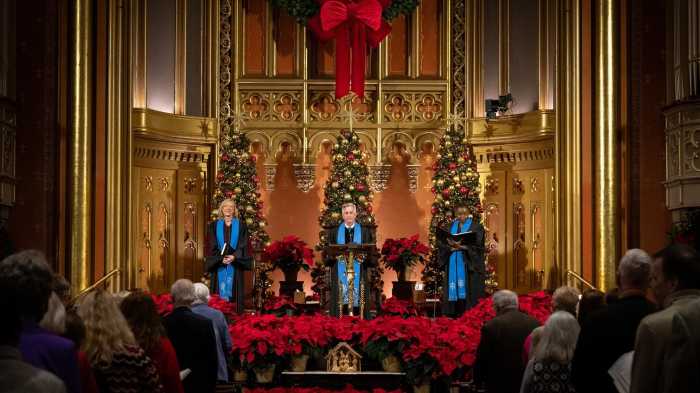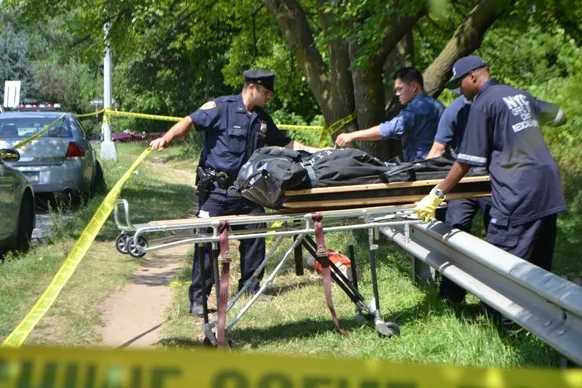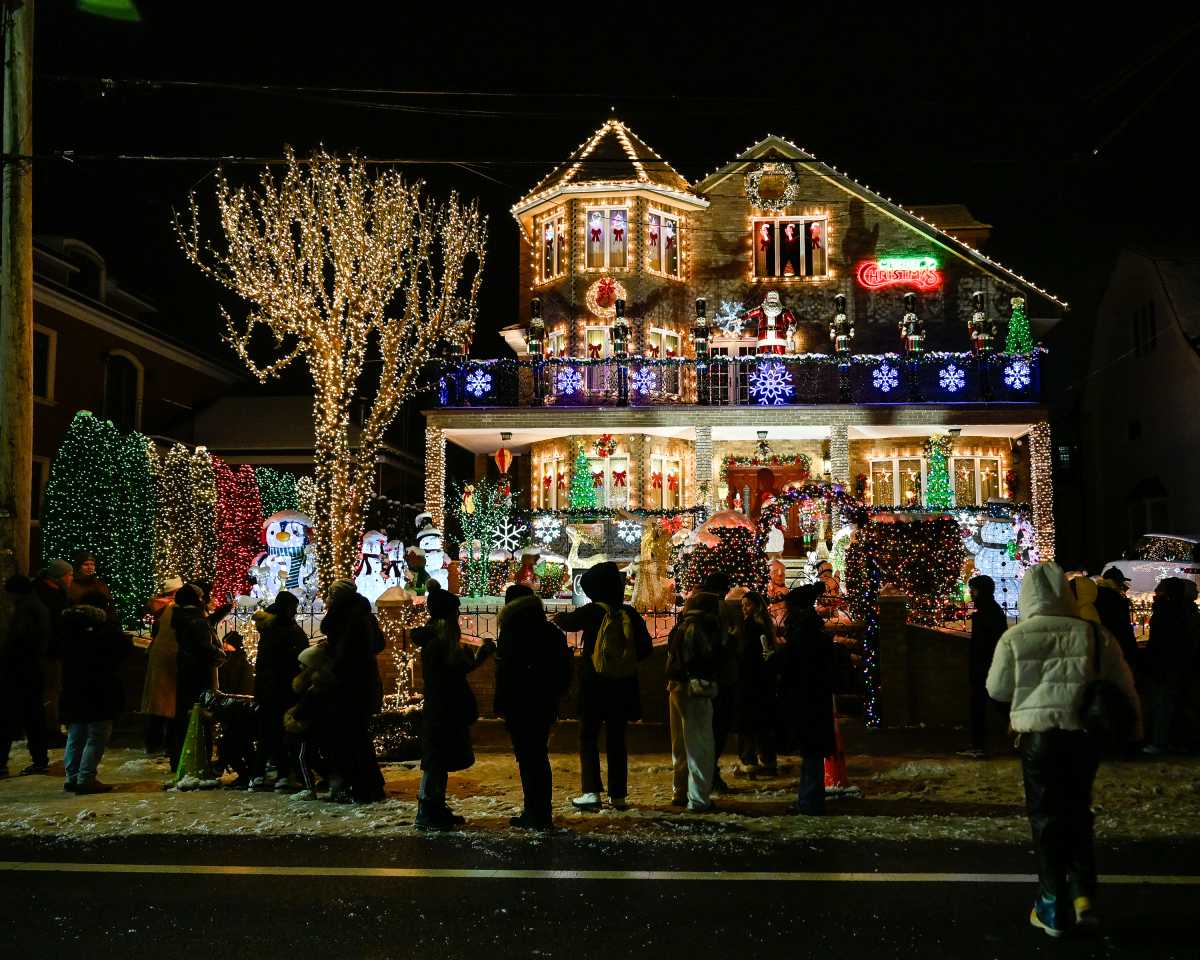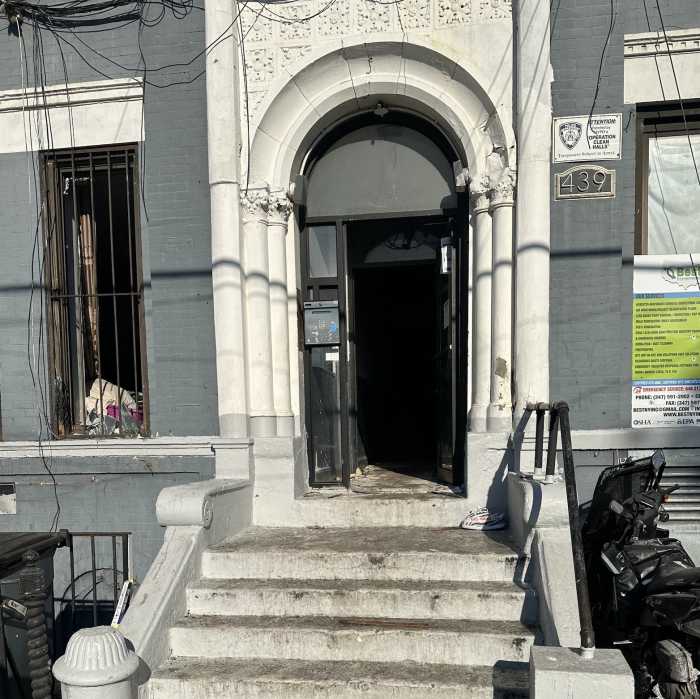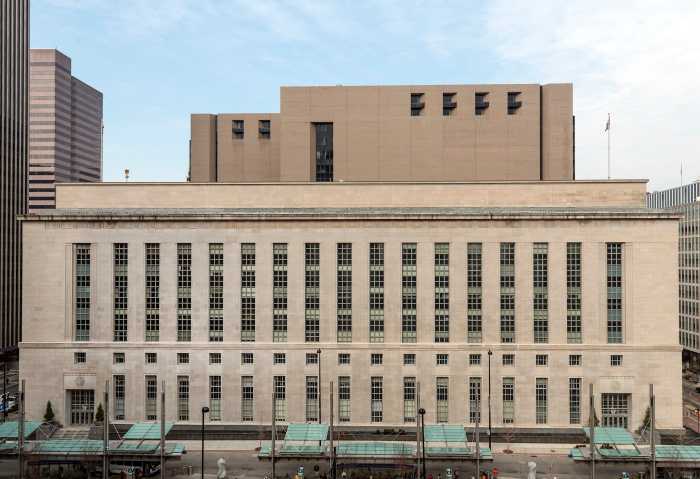By Albert Amateau
As the Bloomberg administration’s ambitious vision for the future of the Hudson Yards district reaches the midpoint of the city land-use review procedure, opposition to the plan’s proposed stadium and No. 7 subway line extension is gathering steam.
City Comptroller William C. Thompson raised serious questions on Oct. 20 about the proposed financing for the subway extension and construction of a platform over the West Side rail yards where the proposed New York Sports and Convention Center stadium would be built to serve the New York Jets football team and an expanded Javits Convention Center.
At the same time, City Councilmember Christine Quinn, Assemblymember Richard Gottfried, Congressmember Jerrold Nadler and Public Advocate Betsy Gotbaum joined transit advocates in opposing the plan, focusing on the key role of the Metropolitan Transportation Authority, the state agency that owns the rail yards and operates the subways.
Although the state and the city have not determined what the M.T.A. should receive from the Jets for the development rights over the yards, the authority has engaged consultants to come up with a value.
Gottfried, who supports using the proposed $600 million rail yards platform for a Javits expansion but is adamantly opposed to plans for a stadium, was skeptical about the process.
“Using the M.T.A. rail yards for commercial and residential development and expansion of the Javits Center would produce much more jobs and revenue for the city and the M.T.A. rather than putting a stadium there,” said Gottfried, adding that Governor Pataki controls the transportation agency and supports the stadium, “so the M.T.A. consultants will probably give the M.T.A. the results that they want.”
The $11 million M.T.A. budget gap this year and the likelihood of a fair increase this year or next is a key point in the opposition to the stadium proposed for the rail yards located between 10th and 12th Aves. from 31st to 34rd Sts.
“The fact that the M.T.A. has just proposed fare hikes at the exact same time that the Jets are thrusting this stadium on New Yorkers speaks volumes about their priorities,” said Quinn. “The M.T.A. is too willing to raise fares and they are too willing to give away billions to the Jets in a sweetheart deal for the rail yards,” she added.
“In the city’s rush to get the air rights from the M.T.A., it has failed to examine other options which could prove more lucrative than the stadium,” Nadler said. “The process must be opened up with an honest request for proposals in order to see what the market really produces, not what predetermined studies show,” he added.
Anna Levin, a member of both the Hell’s Kitchen/Hudson Yards Alliance and Community Board 4, both of which are against many aspects of the city’s 33-square-block Hudson Yards redevelopment, said the city has not informed the public about details of the plan.
The community board last month sent a 44-page resolution criticizing the Hudson Yards 6,000-page draft generic environmental impact statement to the City Planning Commission, which drafted the report. While acknowledging that parts of the Hudson Yards neighborhood now zoned for low-density industrial use should be rezoned to allow commercial and residential expansion, the C.B. 4 resolution said the D.G.E.I.S. was inadequate in many areas.
The design of the 75,000-seat Jets stadium by Kohn Pedersen Fox also came in for a bashing from Nicolai Ouroussoff in a Nov. 1 New York Times architecture column.
“Even if [the stadium] were a gift to the city the result would be depressing,” Ouroussoff said. “The park spaces, supposedly conceived as an act of civic generosity, are nothing more than banal front lawns for retail outlets,” Ouroussoff went on, but added, “I’ve seen uglier stadium designs.”
The Community Board 4 resolution found problems in the environmental statement concerning air quality, noise and vibrations and a failure to consider what the board said are likely delays in the completion of the No. 7 subway extension beyond 2010.
The board also said the environmental statement had errors, like wrongly identifying a lot with private bus parking as a property with low buildings. Such errors could result in false assumptions about sewage flow, water pressure and the pace of development in the rezoned Hudson Yards, the resolution says.
The board also found fault with other basic information in the statement. For example, the board arrived at a population of 21,331 for the environmental study area using city Department of Finance current data, while the D.G.E.I.S. arrived at 11,565 using the 2000 census.
Comptroller Thompson sent an Oct. 20 letter to the mayor saying, “Your plan to finance several billion dollars in infrastructure costs — extension of the 7 subway line, construction of a platform over the rail yards and other improvements — is extremely risky.”
The city plan involves paying debt service on bonds issued by the proposed Hudson Yards Infrastructure Corp. from revenues from the project. But Thompson said the city’s plan to use its Transitional Finance Authority — a state public-benefit corporation created in 1997 to finance part of the city’s capital program — could result in general tax revenues going to pay debt service if revenues from the project do not materialize.
The comptroller called the plan “a backdoor financing scheme” that could set a precedent beyond the Hudson Yards. “Any local development corporation such as Hudson Yards could be created at any time to divert funds from the city’s operations without the consent of the City Council,” Thompson reasoned.
Thompson said the mayor is avoiding City Council review by deciding not to include the Hudson Yards project in the city’s capital budget. “If your plan for the West Side is worthy of our city’s investment, it should be included in our capital budget and be subject to scrutiny beyond what has been offered to date,” Thompson said.
Also Read: https://www.amny.com/news/theater-89/












